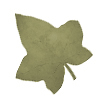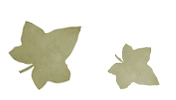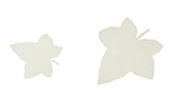


|
Herbs are powerhouses of nutrition. Used wisely and regularly, herbs can replace costly pills and supplements, and even some drugs. For example, if you currently take fish oil capsules, omega-3 oil capsules, flax oil, or antidepressants, a switch to purslane could improve your health and save you lots of money, too. Purslane (Portulaca oleracea) is a common weed in cultivated soils throughout the United States. You won't find purslane in the supermarket or health food store (yet); you'll have to discover it in the wild, which is very easy to do if you look during the summer. In the country, look in gardens. In the city, look in flower beds and planters. With its thick red recumbent (laying on the ground) stalks and its small fleshy green leaves, purslane looks like a tender succulent, not a hardy annual whose seeds find it easy to survive long cold winters. When you find purslane, harvest it by cutting the tender tips - as little as one inch or as much as eight inches, depending on the size of the plant. Eat fresh purslane alone dressed with olive oil and vinegar or lightly sautéed in butter, or add it to salads and soups. Try Purslane Pickles (recipe below). Or cool off with Purslane Gazpacho (recipe below.) Herbalist James Duke says purslane contains up to 4000 ppm of the omega-3 fatty acid alpha linolenic acid (ALA); that means a 100 gram serving (between 3 and 4 ounces) contains 400 mg of ALA. Purslane-fed chickens lay eggs that have twenty times more omega-3s than regular eggs. Eating purslane is tastier, safer, and more effective than taking omega-3 supplements. To increase the effect, Duke suggests adding walnut oil to your purslane. Purslane counters depression. It is one of the five herbs - lettuce, amaranth greens, lamb's quarters greens, and watercress are the other four - richest in antidepressant substances. Purslane is a superior source of calcium, magnesium, potassium, phenylalanine, and tryptophan, all of which are known to moderate the effects of depressive brain chemicals. Purslane is loaded with nutrients. A single one-cup serving contains all the vitamin E you need in a day, as well as significant amounts of vitamin C and pro-vitamin A. Purslane is one of the very best sources of magnesium. One cup supplies your minimum daily need of 450 mg. Lack of magnesium is associated with diabetes, migraines, osteoporosis, hypertension, and asthma. And, that one cup of fresh purslane gives you over 2000 mg of calcium and 8000 mg of potassium. Women who take calcium supplements do nothing to strengthen their bones. Women who eat foods rich in calcium - such as yogurt, stinging nettles, and purslane - have flexible bones which resist breaking. Purslane seeds have been found in caves in Greece that were inhabited 16,000 years ago. Does purslane have a place in your life? Remember that herbs are not drugs and they don't work in drug-like ways. Herbs nourish, strengthen, and tonify. Their effects are deep-rooted and may be slow to become visible. Because purslane is a food, it is generally considered safe to use it even if you are taking multiple drugs. As the effects of purslane become apparent, and if your medical advisor agrees, you may wish to slowly lessen the amount and number of drugs and supplements you take. Green blessings. Purslane
Gazpacho Preparation time about one hour including picking the herbs. This dish is a late summer favorite. It looks like confetti with the purple shiso, the green basil, the white cucumber, and the red and orange tomatoes. Everyone loves it, even kids, because it has no raw onion (hooray!) and no raw garlic and absolutely no hot pepper of any kind. Cut juicy, ripe tomatoes (if possible, half red ones and half orange ones) into half-inch squares. Carefully retain all liquid and place in large bowl with 6 cups cut tomatoes. Peel and remove pulp and seeds from young cucumbers. Cut into half-inch squares and add 4 cups cut cucumbers to bowl. Add 1 tablespoon sea salt. Mix well, cover, and set aside in the refrigerator for several hours. Just before serving, add 4 cups purslane tender tips (whole or chopped), about 20 fresh basil leaves and about 10 fresh shiso leaves (cut across the leaf into moderate-sized "shreds"), 2-3 teaspoons granulated garlic, 2 tablespoons lemon juice, and 1/2 cup extra virgin olive oil. Adjust seasonings as desired. Purslane Pickles Preparation time about 15 minutes, including picking the purslane. Use any size jar with a plastic lid. Narrow-necked bottles can be a problem. Fill your jar or bottle with freshly-harvested purslane cut into two-inches pieces. Leave a little space at the top. Fill the jar or bottle with room-temperature apple cider vinegar, being sure to completely cover the plant material. Cover. (Metal lids will corrode; do not use.) Label, including date. This is ready to use in six weeks; but will stay good for up to a year. To use: A tablespoon of purslane vinegar on cooked greens, beans, and salads adds wonderful flavor along with lots of minerals. You can also eat the pickled purslane right out of the bottle or add it to salads or beans. Susun Weed Visit Susun Weed at: www.susunweed.com and www.ashtreepublishing.com For permission to reprint this article, contact us at: susunweed@herbshealing.com Susun S. Weed is the author of four highly-acclaimed books on herbs and women's health: Wise Woman Herbal for the Childbearing Year, Healing Wise, New Menopausal Years the Wise Woman Way and Breast Cancer? Breast Health! the Wise Woman Way. Ms. Weed lectures world-wide on women's health and herbal medicine. From her home in New York State's Catskill Mountains, she directs the activities of the Wise Woman Center, acts as editor-in-chief of Ash Tree Publishing, personally oversees the work of 400 correspondence students, and trains herbal and shamanic apprentices. Susun has lived the simple life for nearly 40 years as an herbalist, goatkeeper, homesteader, and feminist. She has been called "a true radical - deeply rooted," "a modern pioneer," and "one of the founding mothers of herbal medicine in the United States†. |
|

Gaia's Garden Library
Non Fiction Section : Gaia's Garden Herblore | Susun S. Weed Articles | Articles and Musings
Fiction Section : Short Stories & Prose| As Told
By Cat | Public Domain Texts| Poetry
Shop | Library | Gallery | Forum | Contact | Links








